Selecting the appropriate litter box for your cherished cat is easier said than done. Choosing one can be daunting, with options ranging from simple trays to sophisticated self-cleaning varieties available on the market.
But don’t worry, you can find various types of cat litter boxes that will be perfect for you and your cat.
One of the biggest mistakes many cat owners make is underestimating the significance of choosing the best litter box. In essence, it’s not just about avoiding a mess; it’s about offering your cat a comfortable environment.
The wrong box choice can result in messes around your house, concern for your pet, and frustration for yourself.
Over the years of my practice as a feline behaviorist, I have witnessed how much the choice of a litter box matters.
Many clients have shared that their cats used to have frequent accidents, but after switching to the right litter box, their litter habits improved significantly.
Types of CAT Litter Boxes
Cat owners have a variety of cat litter boxes to choose from, each designed to address the needs and preferences of both cats and their guardians. Here’s an overview of 12 common types of litter boxes:
1. Open Litter Boxes
Open litter boxes are the oldest and most straightforward type of cat toilets you can purchase. These simple, uncovered trays offer a basic solution for your cat to use for bathroom purposes.
They are easily accessible, and these exposed structures provide visibility, which may be preferred by cats while eliminating.
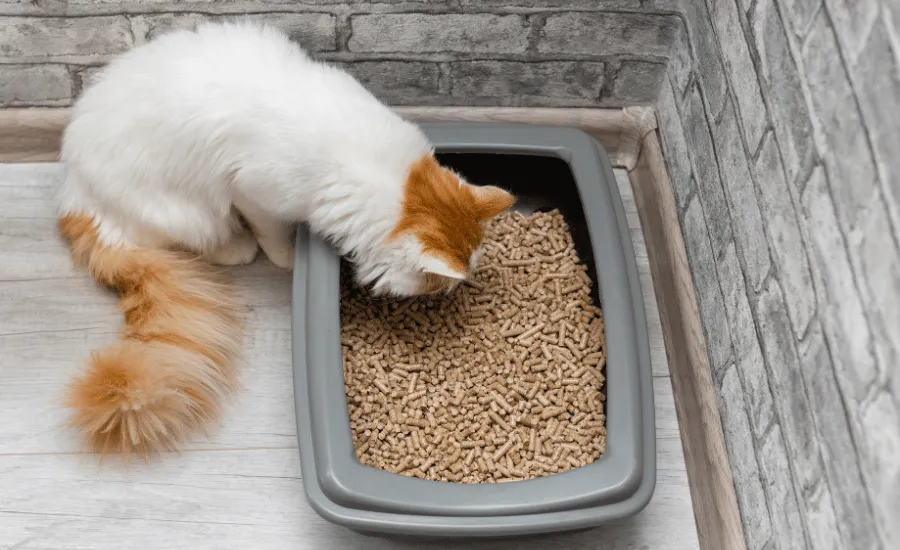
One should consider an open litter box as it is inexpensive and very easy to clean, with no buildup in the corners of the litter box.
They offer ample space for large cats or those with mobility problems, as there are no obstructions to climbing.
However, the lack of a cover means odors can spread more easily, and more active cats might scatter litter around the area.
| What We Like | What We Don’t |
|---|---|
| Provides an unobstructed view for cats | No privacy for shy cats |
| Accommodates cats of all sizes | More visible in living spaces |
| Easy to monitor for health issues |
2. Covered Litter Boxes
Covered or enclosed litter boxes provide a more private bathroom environment for your cat. These boxes have a hood or dome on top of the litter tray, forming a small room where your cat can defecate.
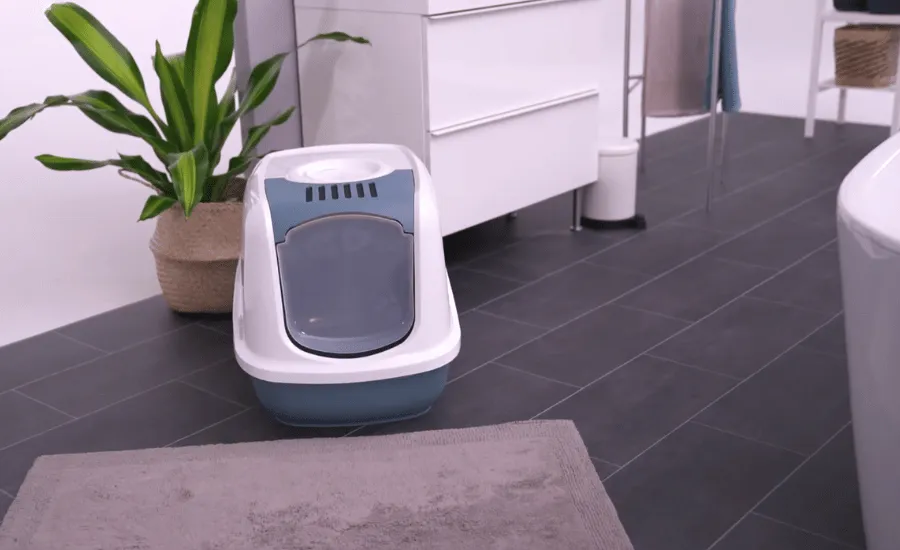
The cover helps contain odors within the box and prevents litter from being kicked out, which can be particularly helpful for cats that tend to scatter litter or burrow deeply.
Another reason many cat owners prefer covered boxes is that they conceal any unsightly waste that might otherwise be visible.
Some cats enjoy these boxes because they feel more secure in an enclosed area rather than an open one.
| What We Like | What We Don’t |
|---|---|
| It helps mask the litter box appearance | It is intimidating for some cats |
| Reduces litter tracking | It is quite challenging to clean thoroughly |
| It can make cats feel more secure |
3. Corner Litter Boxes
Corner litter boxes are specifically designed to be installed in the corners of homes, making them ideal for spaces with limited floor area.
These shaped boxes help utilize corners, ensuring that you have a designated bathroom area for your cat.
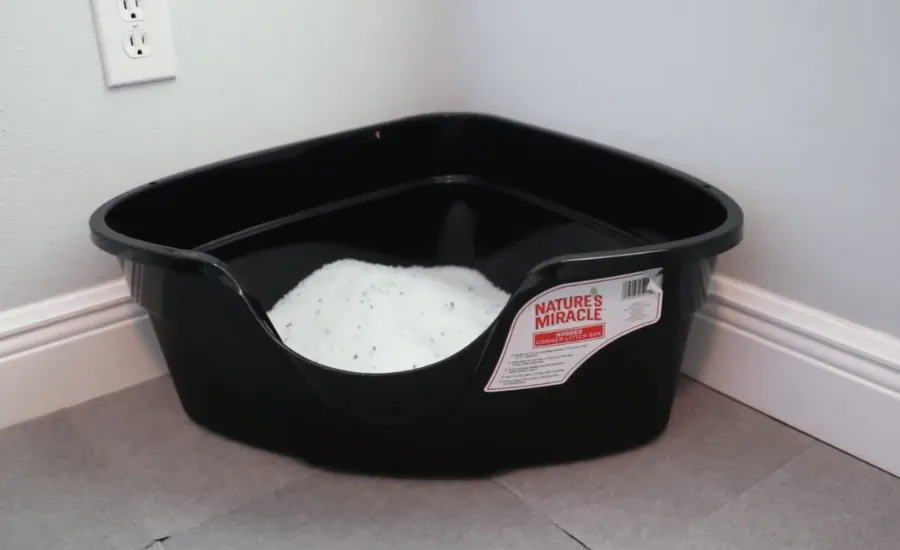
Most corner litter boxes feature high sides or covers to help keep litter contained and reduce tracking.
Their shape can also provide security for cats that prefer covering their back area when using the litter box.
However, the triangular design may offer less space than rectangular boxes, which could be problematic for larger cats or multiple cats living together in the same space.
| What We Like | What We Don’t |
|---|---|
| Optimizes room layout | Limited sizing options available |
| Often includes high sides for privacy | It is not suitable for cats who prefer open spaces |
| It can be less obtrusive in living areas |
4. Designer Litter Boxes
Designer litter boxes are a great departure from ordinary plastic trays and serve as functional art that blends with home decor. These boxes come in various designs, ranging from simple modern enclosures to ones that resemble furniture.
Most original designer litter boxes are made to resemble regular tables, cabinets, or planters, which can be especially rewarding for individuals living in limited spaces.
Despite their outstanding appearance, these boxes are often more expensive than traditional ones.
Their complicated design can also make cleaning more difficult.
| What We Like | What We Don’t |
|---|---|
| Enhances room aesthetics | It requires more frequent cleaning |
| Doubles as functional furniture | Often less spacious for larger cats |
| It helps maintain a tidy appearance |
5. Dog Proof Litter Boxes
Dog-proof litter boxes can be purchased specially designed to ensure that dogs do not interfere with your cat, her litter box, or bathroom area. These boxes generally have a small door that allows cats to enter and access the litter.
Most models are accessible and are often fitted with covered designs or entry systems. These boxes are sectioned, making it difficult for dogs to access them.
This type of litter box can be very useful when cats share the home environment with dogs.
| What We Like | What We Don’t |
|---|---|
| Prevents dogs from accessing cat waste | It is difficult for older or less agile cats to use |
| Reduces litter scatter from dog disturbance | Often more expensive than standard litter boxes |
| Provides cats with a sense of security |
6. Top-entry Litter Boxes
As their name implies, top-entry litter boxes are enclosures where the entry is on top, not on the side. Cats must climb onto the lid and into the box to use it.
This configuration has several strengths, especially for energetic kittens that throw dirt out or dig in it.
The high walls and top-entry design minimize litter scatter on the ground and floors, keeping them clean.
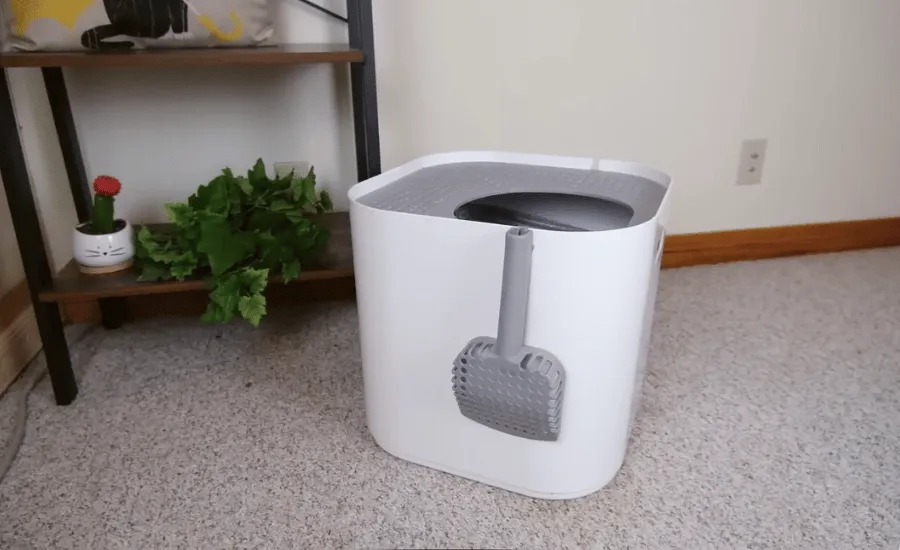
Some of the best top-entry boxes also have a rough or hole-patterned cover that scratches the cat’s paws when exiting, helping to reduce the amount of litter dropped.
These boxes can also help to confine the litter for shy cats and prevent dogs or small children from accessing it.
However, they may not be suitable for all cats, as some entries might be difficult for cats with mobility problems or for larger cats.
| What We Like | What We Don’t |
|---|---|
| Excellent at containing litter scatter | Not suitable for cats with mobility issues |
| Provides privacy for shy cats | Some cats may be reluctant to use them initially |
| Often, aesthetically pleasing design |
7. High-sided Litter Boxes
High-sided litter boxes are those with enclosing walls that are higher than most common litter boxes.
These raised rims are designed to minimize the spread of litter on the floor and are particularly useful for handling cats who love to dig or those who tend to pee on the upper portions of the sides of the box.
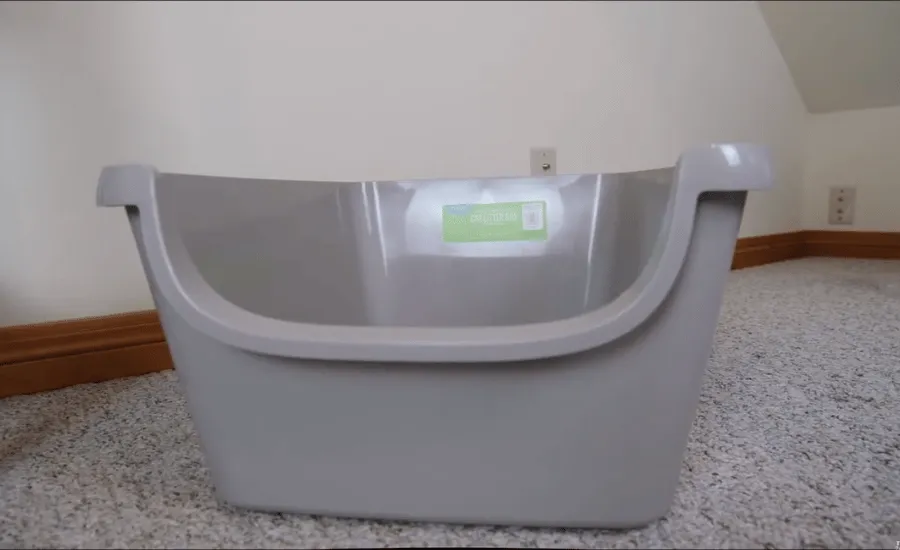
They also help prevent overspray, making these boxes ideal for male cats or cats with issues that prevent them from aiming correctly.
Many high-sided boxes are designed with a lowered front to accommodate cats of all ages and those with mobility issues.
This design strikes a balance between containing mess and making the box easy to use if left open all the time.
| What We Like | What We Don’t |
|---|---|
| Effectively contains litter scatter and spray | It is heavier and more difficult to move when full |
| Suitable for most cats, including large breeds | It requires more litter than standard boxes |
| Often more spacious than standard boxes |
8. Sifting litter boxes
Sifting litter boxes are designed to make cleaning your cat’s litter box less unpleasant and more efficient. These boxes generally consist of two or three trays that can be stacked on top of each other.
The top tray contains holes or bars that allow only clean litter to drop while holding back the solid waste. To clean, all you have to do is lift the top tray to separate the clean litter.
This system can be very helpful in minimizing the time and energy spent on daily litter box maintenance.
There is a wide range of sifting boxes, including open types, covered ones, and even self-cleaning sifting boxes.
| What We Like | What We Don’t |
|---|---|
| Simplifies the cleaning process | It will not work well with non-clumping litter |
| Reduces direct contact with waste | When full, it is quite heavy, making lifting difficult |
| Can help conserve litter |
9. Self-cleaning Litter Boxes
Self-cleaning litter boxes are advanced technologies that reduce the need for frequent cleaning of your cat’s bathroom. These boxes have automatic systems, ranging from rakes, conveyors, or rotating drums, to scoop and dispose of waste.
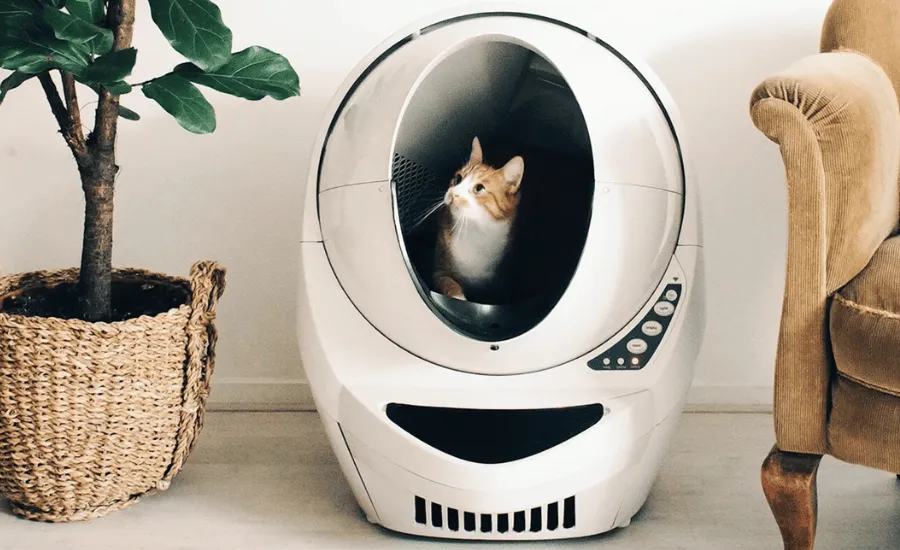
The waste is then dumped into a closed bin or a disposable bag, minimizing smells. Some of the most sophisticated models can even be linked to apps installed on a smartphone.
While these boxes save a lot of time and effort in litter box cleanup, they come with relatively high costs, and you may need to buy special litter or accessories.
| What We Like | What We Don’t |
|---|---|
| Minimizes daily scooping and maintenance | Higher initial cost compared to traditional boxes |
| It helps control odors effectively | It produces noise that some cats find unsettling |
| Can track your cat’s bathroom habits |
10. Extra-large litter boxes
These are oversized cat litter pans designed for large cats and cats that use multiple litter trays. These extra-large boxes are typically much larger than regular litter boxes, providing enough space for the cat.
Most large litter boxes are designed to contain scattered litter, spraying, and heavy-digging cats. Cats with the messy habit of tossing litter around will benefit from extra-large litter boxes with high sides.
As with all specially designed products, these boxes offer numerous advantages for both cats and owners.
| What We Like | What We Don’t |
|---|---|
| Ideal for large cats or multi-cat households | Requires more floor space |
| Reduces frequency of complete litter changes | It is heavy and difficult to clean when full |
| Provides more comfort for cats during use |
11. Disposable Litter Boxes
Disposable litter boxes are readily available to cat owners who do not wish to clean and attend to regular maintenance.
These boxes are typically made from recycled paper or cardboard and are specifically designed for single use and disposal.
Some boxes come pre-filled with litter, making them perfect for use when traveling or as an additional litter box, especially when you’re a guest at a relative’s house.
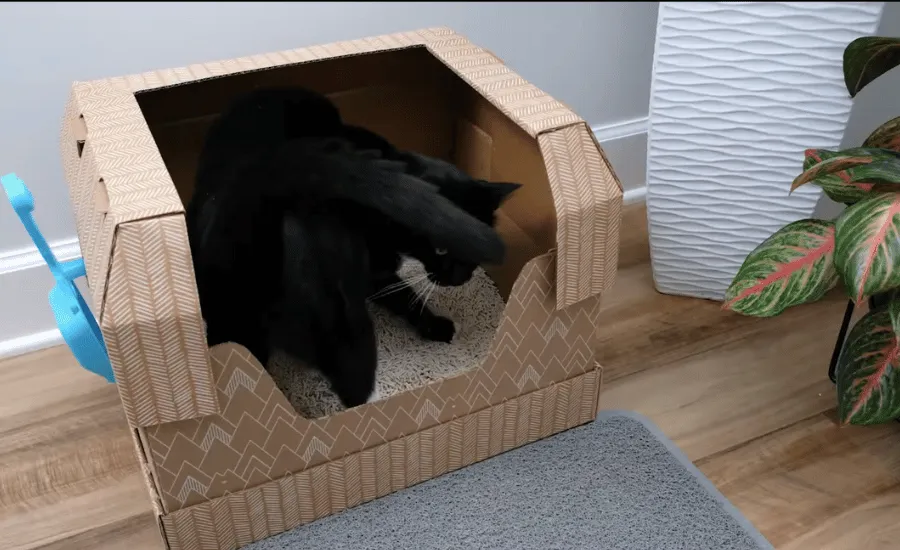
They are also widely used in shelters and catteries. Temporary litter pans are relatively lightweight, easy to set up, and do not require washing or ammonia solutions.
Permanent boxes are more durable than shallow ones but may be less effective if your cats are heavy diggers.
Also, the cost of replacing disposable boxes can be higher than regular maintenance of a conventional litter box in the long term.
| What We Like | What We Don’t |
|---|---|
| Convenient for travel or temporary use | Higher long-term cost compared to reusable boxes |
| No cleaning or maintenance is required | It is not much durable as permanent litter boxes |
| Often biodegradable and eco-friendly |
12. Portable Litter Boxes
Portable litter boxes are small and suitable for cats on the move, whether for vacations, camps, or other events. These boxes are usually compact and portable, making it easy to carry them from one place to another.
Some portable litter boxes are collapsible or foldable. Some models feature built-in carrying cases or handles to make transportation easier.
There are various types of carriers with removable trays, such as fabric enclosures that pop up, hard plastic boxes with lids, and inflatable bunting.
While they are less large and stable than fixed boxes, portable litter boxes provide cats with a familiar and clean place to defecate in unfamiliar locations.
| What We Like | What We Don’t |
|---|---|
| Easy to transport and store | Usually smaller than standard litter boxes |
| Ideal for travel or temporary living situations | It is not as durable as permanent options |
| Helps maintain a routine for cats while away from home |
Check Out: How to Make a DIY Litter Box: Easy and Affordable Ideas
How Big Should Your Litter Box Be?
Litter box dimensions must be large enough to suit your cat and help them engage with it appropriately.
Another general guideline is to choose a box that is at least 1.5 times the length of your cat, from the tip of the nose to the base of the tail.
The box size needed for most adult cats is 20-22 inches long. The width should be at least the length of your cat.
The sides should be 5-7 inches high or higher depending on the cat, especially if it aggressively sprays or kicks the litter.
Which Litter Box is Right for You?
Choosing the right litter box is very important; it depends on the cat’s behavior and the environment in which you live.
It’s essential to consider your cat’s size, age, and physical capabilities. Some cats may easily climb in and out of boxes, while others may require shallow boxes or those with tops or pop-open lids.
For homes with multiple cats, ensure there are enough boxes in different forms. Location also plays a role; corner or furniture-style boxes are suitable as they occupy little space in small homes.
However, if odor or aesthetics are a concern, covered or self-cleaning boxes may be the best choice.
The Conclusion
Choosing the right litter box will not only benefit your cat’s health but also help prevent messes in your house. Some factors to consider include the size of your cat, its age, preferences, your home environment, and how much effort you’re willing to put into cleaning.
Choose from the various types and try the one that works best for you and your cat. Remember, though, that cleanliness is essential, regardless of the type of box you choose.
Overall, the best litter box is the one your cat will use without deciding to go elsewhere.
Until next time, Meow-Meow!
FAQs
What type of litter box do cats like best?
Various types of cat litter boxes that are favorable for cats include portable litter boxes, top-entry litter boxes, and open litter boxes.
What is the best litter box to prevent UTI?
Cat litter box types for preventing UTIs are disposable and sifting. These prevent them as they do not retain your cat’s poop.
What is the best litter box for containing smell?
Different types of litter boxes control smells, such as covered and self-cleaning litter boxes with carbon filters. Regular cleaning and odor-absorbing litter also help control odors.
Do cats like deep or shallow litter boxes?
Most cats prefer shallow litter boxes (2-3 inches deep) for easy access and natural digging behavior, while some may prefer deeper boxes for privacy.

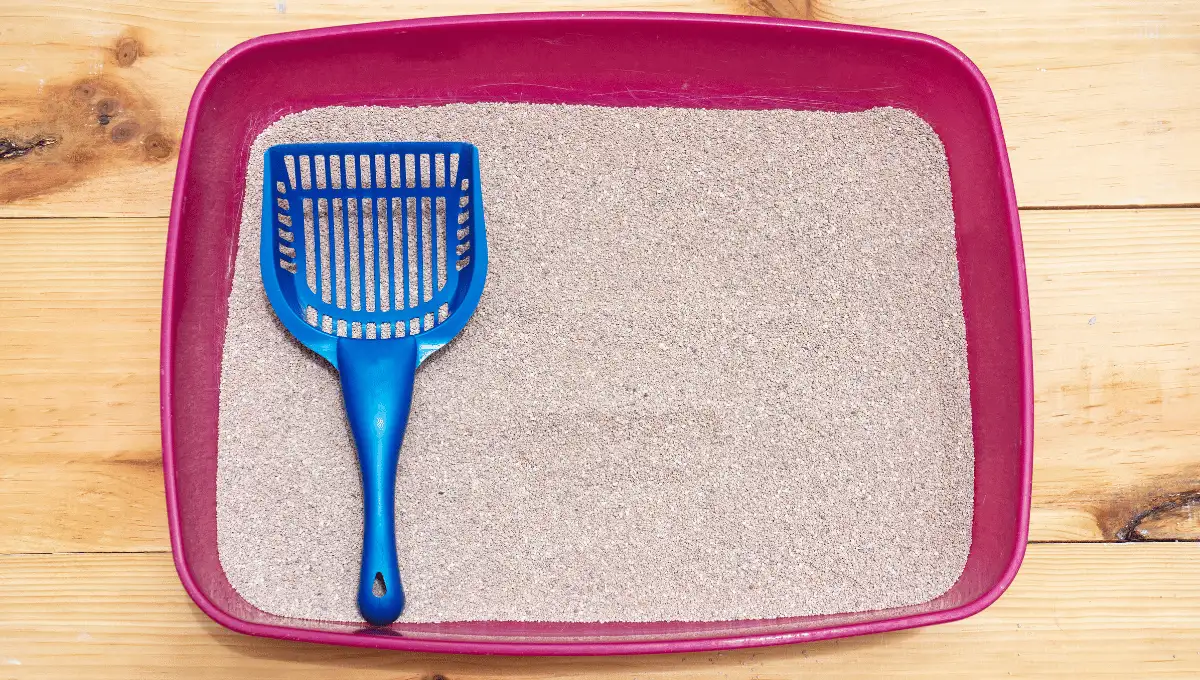

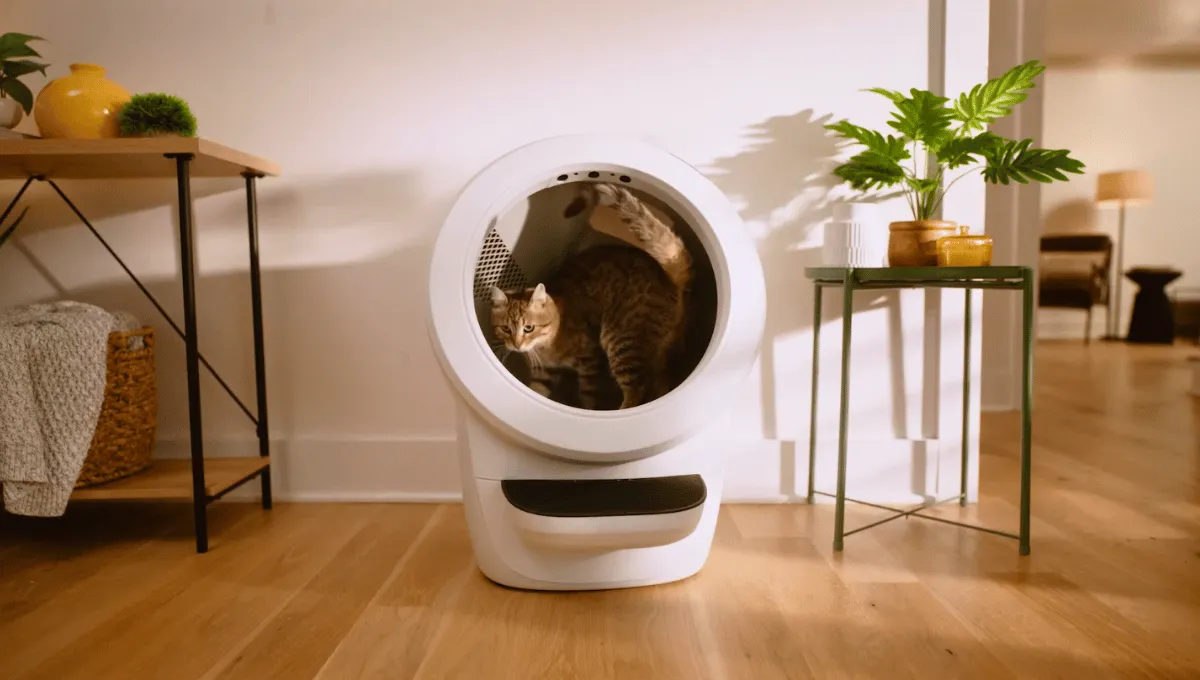
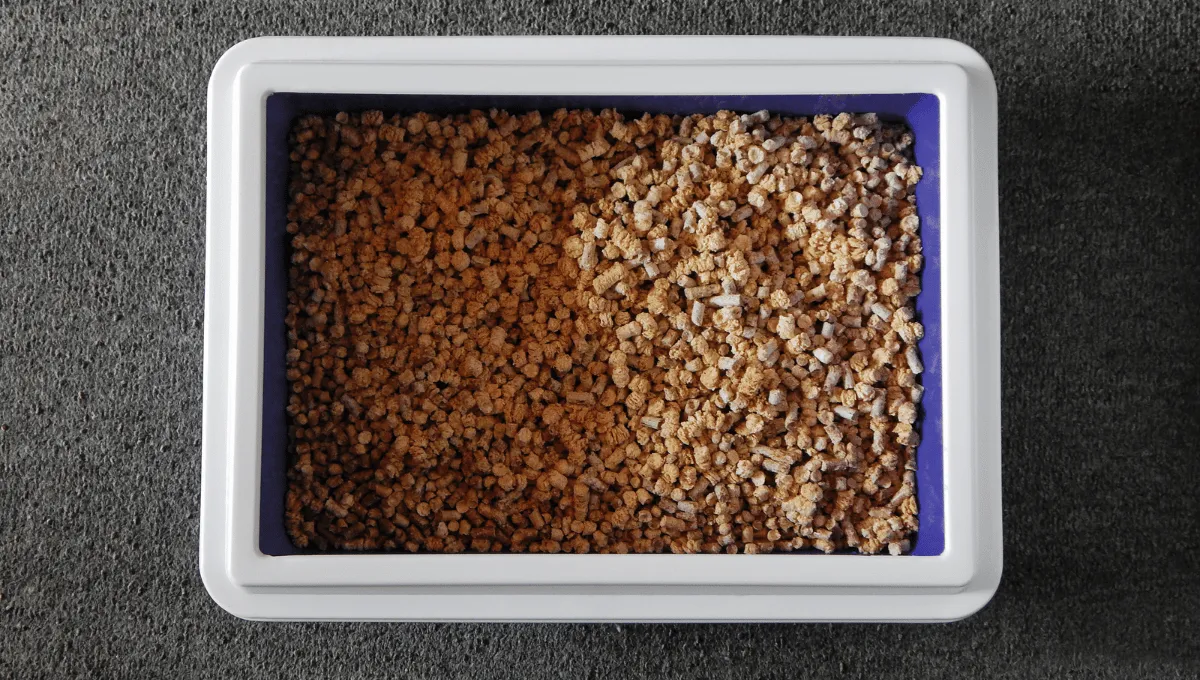
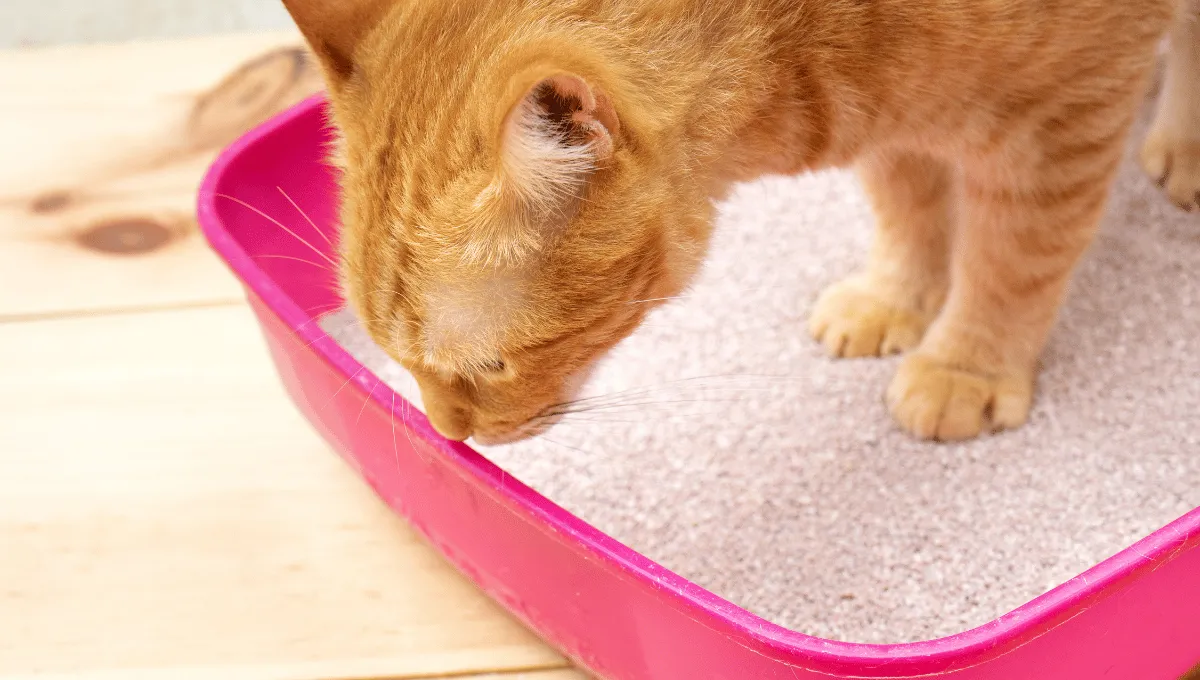
0 Comments